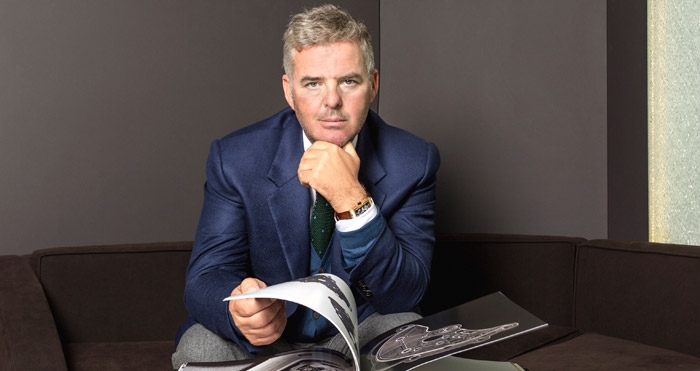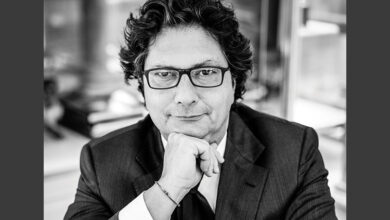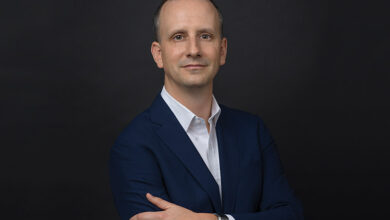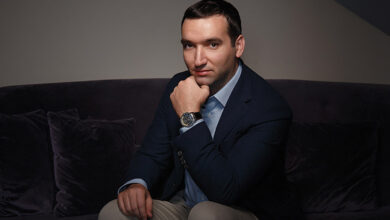Richard Mille grows deeper roots in the Middle East
While timepieces from this illustrious brand have become synonymous with status in the region, consumers, now more than ever, are becoming better informed about the watchmaking innovation and ground-breaking design features of a Richard Mille watch. The independent avant-garde brand’s greater focus on ladies’ timepieces has also contributed to its increased demand in the Middle East
Just ahead of the 2015 edition of the Salon International de la Haute Horlogerie (SIHH), we caught up with Peter Harrison, Richard Mille CEO of Europe, Middle East and Africa, to get an update on the brand and discuss its regional impact.
Please elaborate on your expansion plans for the Middle East.
Most of the expansion plans over the next two years will come from own boutique openings, and that has been anchored this year as we’ve opened our office in Dubai, where we’re going to essentially run full distribution, as we do in other locations, such as London, Los Angeles and so on. We will also have our own PR department, we’ll have a service base there, and we are increasing our advertising across the region, using both outdoor and traditional media, and probably by next year we will launch a dedicated Arabic language social media program.
Having very complicated timepieces, what measures are you taking to maintain a high standard of servicing?
What we did this year, is we increased our onsite watchmaking aftersales service within our boutiques, so in London, you’ll see that we have three watchmakers, we have an additional watchmaker at our main distribution centre doing pre-delivery checks, and we have one in Paris, just starting, so when the boutique reopens in December, there’ll be an onsite watchmaker there too. It’s the same in Geneva, where we’re doubling the size of the store, there be a watchmaker there, and equally in the boutique in Dubai, we will start with one, but we may move up to two watchmakers onsite. The additional onsite aftersales service is something that is essential for us to offer, especially at our level. Also with these localised aftersales services, you would be able to get the small service requirements done within a shorter space of time, as opposed to the time it used to take when sending the watch to Geneva and waiting for it to come back.
The RM 35-01 is already sold out everywhere, and there are some rumours that this is not true, that there are possible delays in the production; what is your view on this?
We plan our production 18 months before the watches are delivered. The production of the RM 35-01 model was based partly on the sales of an earlier model, the RM 35, which was very popular, but with this new case, and the NTPT carbon manufacturing process, it has actually taken us by surprise. There is no delay, the demand is much higher than we expected.
Which consumers do you anticipate to be interested in the Aviation Tourbillon?
There are lots of people interested; for example, let’s talk about the Middle East, one of the best, most complicated helicopters that you can buy today is the Sarkovski Blackhawk, it is a 400 million-dollar machine, and most of the applications on this machine are military; in the Middle East there thirty of them in private ownership. It’s a military-level piece of equipment that we’ve produced in this watch, and there definitely is a market for it.
How has Richard Mille faired in the Middle East, compared to the rest of the world?
I think that the Middle East makes up around fifteen per cent of our sales worldwide. There’s lots of different reasons for that, the most obvious reason recently is the expansion of the ladies’ range, which has been really well received. It’s also the ergonomics, and the comfort of a Richard Mille watch that appeals more to people.

Compared to a lot of other brands, Richard Mille charges prices that are fairly close for titanium and gold versions, why is that?
It costs more to machine titanium than it does a gold watch, and of course, the raw material cost is more in a gold watch, than in a titanium watch. Take the screws in the titanium watch, there are thirty different processes, including finishing, in one titanium screw – I think that a kilo of these screws would equate to 20 million dollars. It’s really about the cost of technology and manufacturing. We make gold watches, because I would say they have a nice aesthetic quality; but the titanium pieces are more quintessential of the Richard Mille approach.
Why do you think a lot of people actually prefer to buy titanium?
I think that from a comfort point of view, from a strength of metal point of view – titanium is a very light, very strong and a very hard-wearing type of metal. It’s a more practical material. I think that there is a time and a place for a gold watch, but practically, the watches that we make for racing drivers, and other kinds of sports, are best in titanium.
If you could pick one watch from Richard Mille that is your absolute favourite, which one would it be?
The RM 004! I’ve had it since 2007, for me it’s embodies the pure DNA of Richard Mille. It look almost as good from behind as it looks in the front, it’s the fact that it was probably 6 or 7 years from conception to delivery of the first few pieces. Personally, for me it’s also the perfect size.








